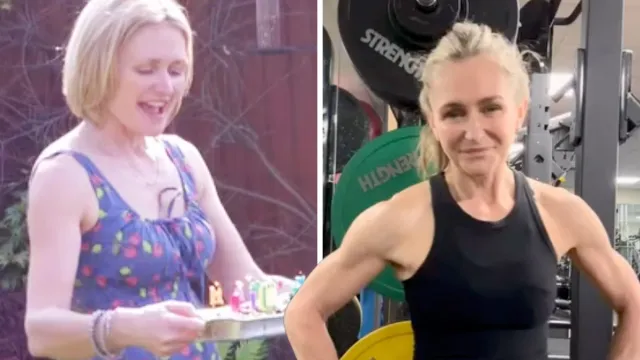This Woman Gave Up Processed Sugar and Got Into the Best Shape of Her Life at 54 By Doing These 4 Things
Do you want to give up processed sugar but aren't sure how? Annie Murray is a fitness trainer and social media influencer whose mission is "empowering mid-lifers to get strong, build healthy habits, and be the best version of themselves," she writes in her Instagram bio. "In February 2021, at age 51 and in menopause, I gave up processed sugar and refined carbohydrates," she writes in the post. "Now aged 54 and post-menopause, I am still living a sugar-free life. She then goes on to reveal the things that helped her achieve this.
Processed Sugar Increases Inflammation, She Says
She starts by explaining the reasons why she decided to give up processed sugar. "I had read that consuming too much of these food types can lead to inflammation in the body, which may increase the risk of developing chronic diseases," she writes in her post.
It Also Impacts Blood Sugar, Which Affects Mood and Energy Levels
"Also, for women during menopause, declining estrogen levels can reduce insulin sensitivity. This can lead to higher blood sugar levels, cravings for sugary foods, and weight gain, particularly around the abdomen. Fluctuations in blood sugar can also affect mood and energy levels, causing irritability or fatigue," she says.
RELATED: I'm a Personal Trainer and These 5 Moves Banished My Clients' Bat Wings in Weeks
After Two Weeks, She Felt Better
"After two weeks of removing cakes, biscuits, sweets, and any food containing processed sugar from my diet, the withdrawal symptoms, like headaches, disappeared. I felt less bloated, had more energy, and improved my sleep. My blood sugar levels felt stable, and the cravings for sugary snacks disappeared," she says.
Read All Food Labels
Her first piece of advice is to read all food labels. "To avoid processed sugar, I had to learn to read food labels. Sugar is usually added to food to enhance the taste and extend the shelf-life of products. These empty calories contain almost no beneficial nutrients such as vitamins, minerals, fiber, protein, or healthy fats. Sugar has over 56 different names, such as maltodextrin, palm sugar, high fructose corn syrup, and dextrose," she writes.
Eat a Nutrient-Rich Whole Food Diet
Second, eat a nutrient-rich whole-food diet. "I replaced refined carbs and processed sugar with a nutrient-rich diet that includes lots of protein, complex carbs, healthy fats, and fiber from fruits and veggies. I cook everything from scratch to know what goes into my food," she says.
RELATED: I Help Women Over 35 Lose Weight: 9 Eating Errors You Must Stop Today
Eat Protein at Every Meal
Third, eat protein at every meal. "I aim to consume at least 100g of protein daily. A high-protein diet helps manage my blood sugar levels and keeps me fuller longer. My main protein sources include lean meats, cottage cheese, Greek yogurt, quinoa, legumes, nuts, and seeds," she says.
She Also Ditched Drinking
In another post, she discusses one more sugar she gave up: Alcohol. "It just wasn't working for me anymore. Due to the hormonal changes I was experiencing, I felt my body was no longer able to process it in the same way," she says. "For a menopausal woman, alcohol can have a negative effect on building muscle, and this is because of the following."
RELATED: This Fitness Coach Walked 60 Minutes Every Day for a Month: The Results Shocked Him
Alcohol Decreases Muscle Protein Synthesis
First, drinking leads to decreased muscle protein synthesis, she maintains. "Alcohol reduces muscle protein synthesis, which is already affected by the natural decline in estrogen during menopause," she writes.
Alcohol Lowers Hormone Levels
It also leads to lowered hormone levels. "Menopause lowers estrogen and testosterone levels, essential for muscle maintenance. Alcohol reduces testosterone and increases cortisol, promoting muscle breakdown," says Annie.
Alcohol Impairs Recovery
It also impairs recovery. "Alcohol can disrupt sleep, which is crucial for muscle recovery. Poor sleep is common during menopause and can be worsened by alcohol, leading to slower muscle repair," she says.
RELATED: 5 Best Bodyweight Exercises To Lose Your Belly Overhang in 30 Days
Alcohol Reduces Nutrient Absorption
Finally, it can lead to reduced nutrient absorption. "The body prioritizes the metabolism of alcohol over the processing of proteins and carbohydrates, potentially hindering recovery and muscle building," she says. And if you enjoyed this article, take advantage of these 15 Quick Ways to Lose Body Fat Percentage in a Week.





